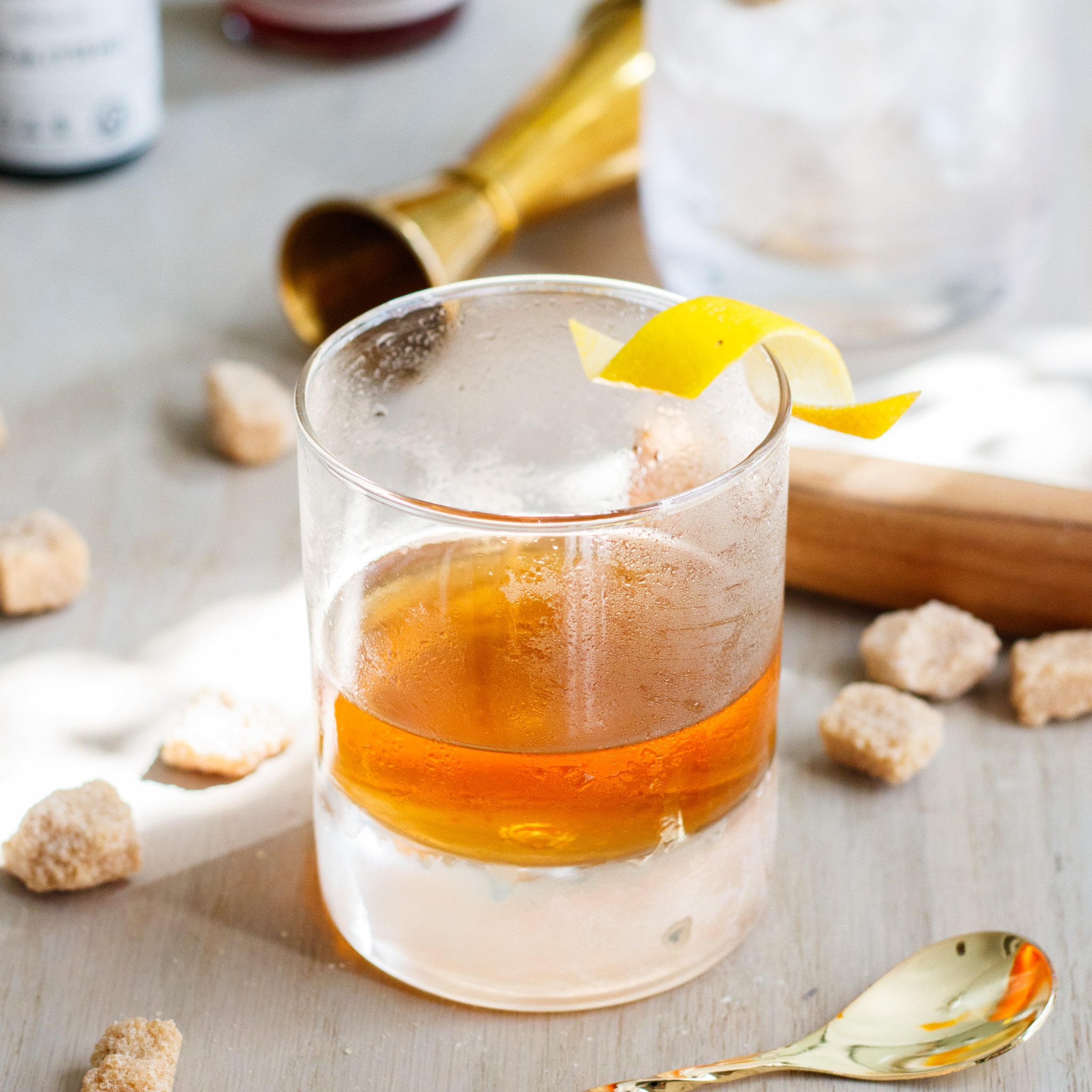2 oz. bourbon
1 oz. fresh grapefruit juice
1/2 to 3/4 oz. honey syrup (to taste, see note)
Optional garnish: Grapefruit twist
Combine bourbon, grapefruit juice, and honey syrup in a cocktail shaker and fill with ice. Shake until well chilled, about 20 seconds. Strain into a chilled stemmed cocktail glass. Pinch grapefruit twist over top of glass to express oils and add twist to drink.
Note:
Honey syrup: simply mix equal parts hot water and honey, stirring or shaking until dissolved, and let cool completely before using. Syrup will keep, refrigerated, up to 2 weeks.
According to Dale DeGroff’s 2002 book, “The Craft of the Cocktail,” the Brown Derby was created at the Vendôme Club in Los Angeles in the 1930s, and it was named for a popular Hollywood Haunt called the Brown Derby. The Brown Derby was a diner chain in LA with domed buildings built to look like brown derby hats.
While the recipe for the Brown Derby cocktail appeared in the book “Hollywood Cocktails” in 1933, it turns out that an identical cocktail called the De Rigueur was published in England’s “The Savoy Cocktail Book” in 1930. There’s no way to be certain if the Brown Derby was ripped off from the De Rigueur or if they were both just invented independently of one another. Either way, the Brown Derby became way more famous and popular than the De Rigueur.
A bartender and cocktail authority Jeffrey Morgenthaler said,
“Honey is this weird ingredient that can tie flavors together when you need it to. And by some miracle it sits in this perfect place between bourbon and grapefruit.”







